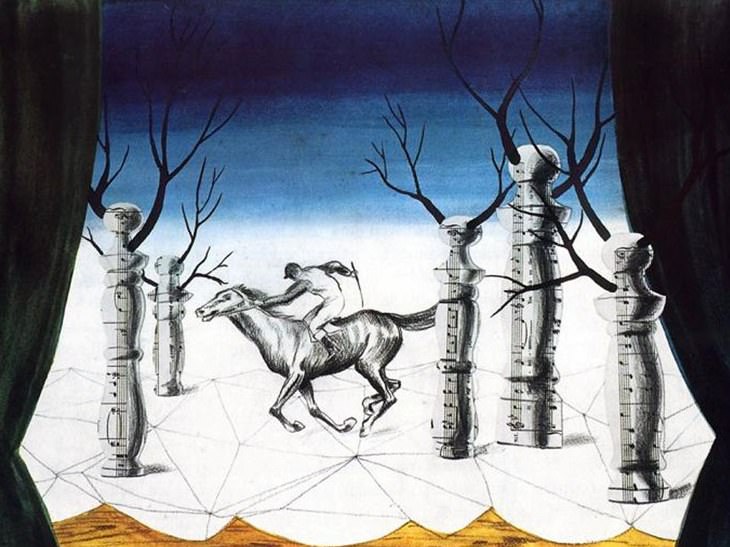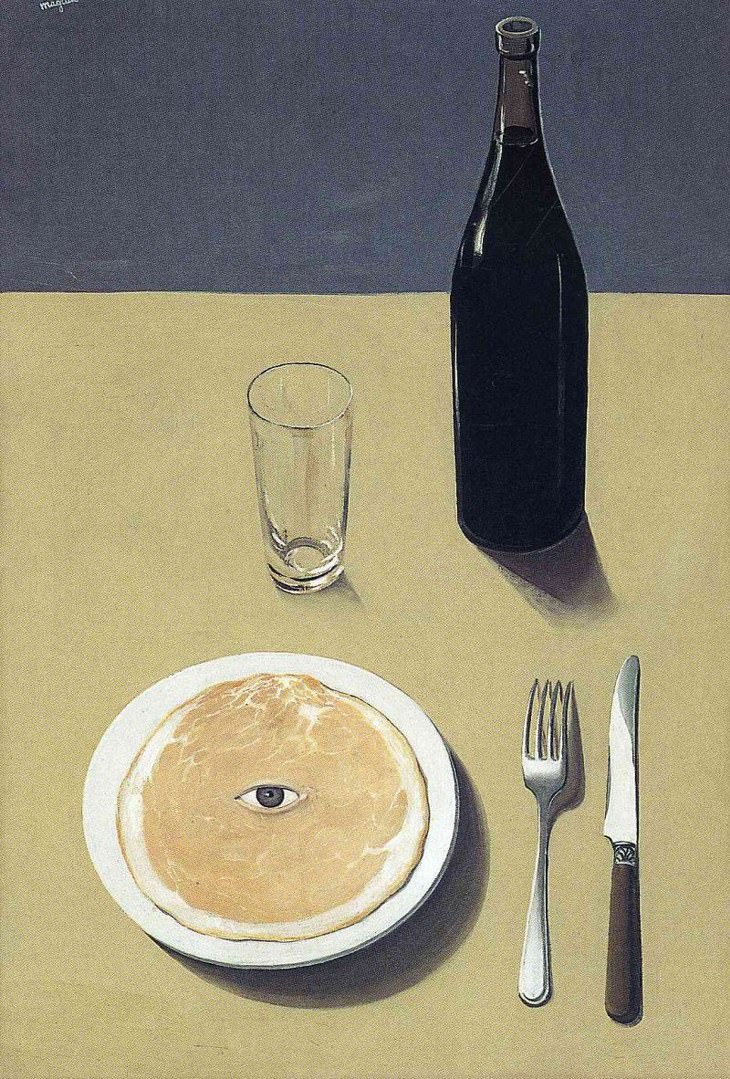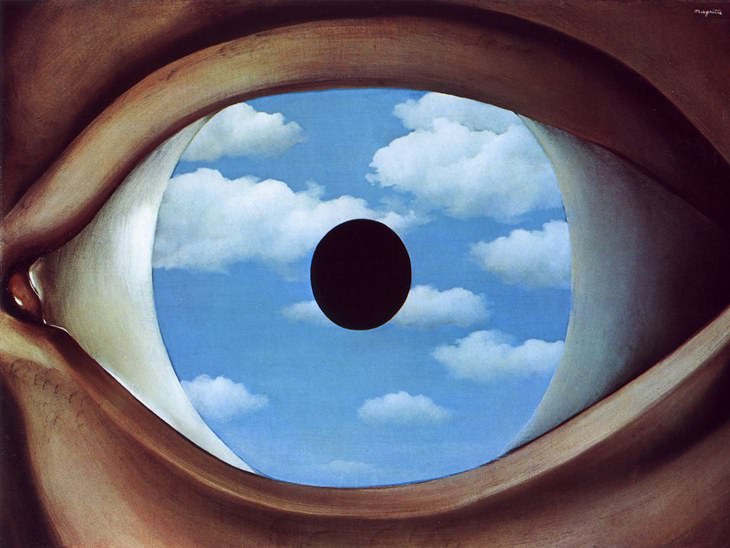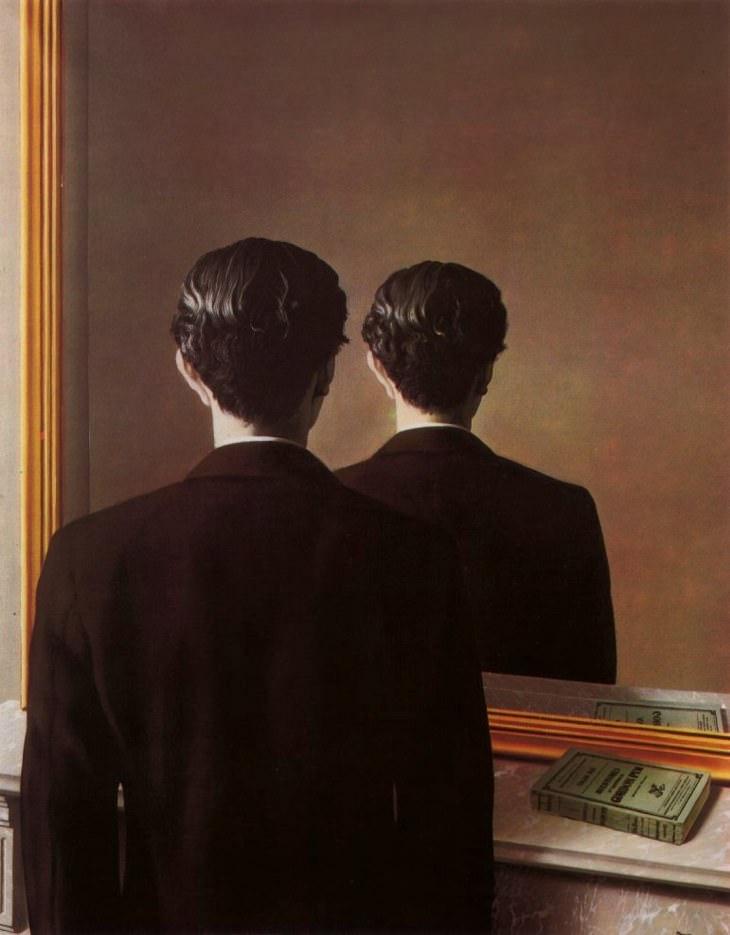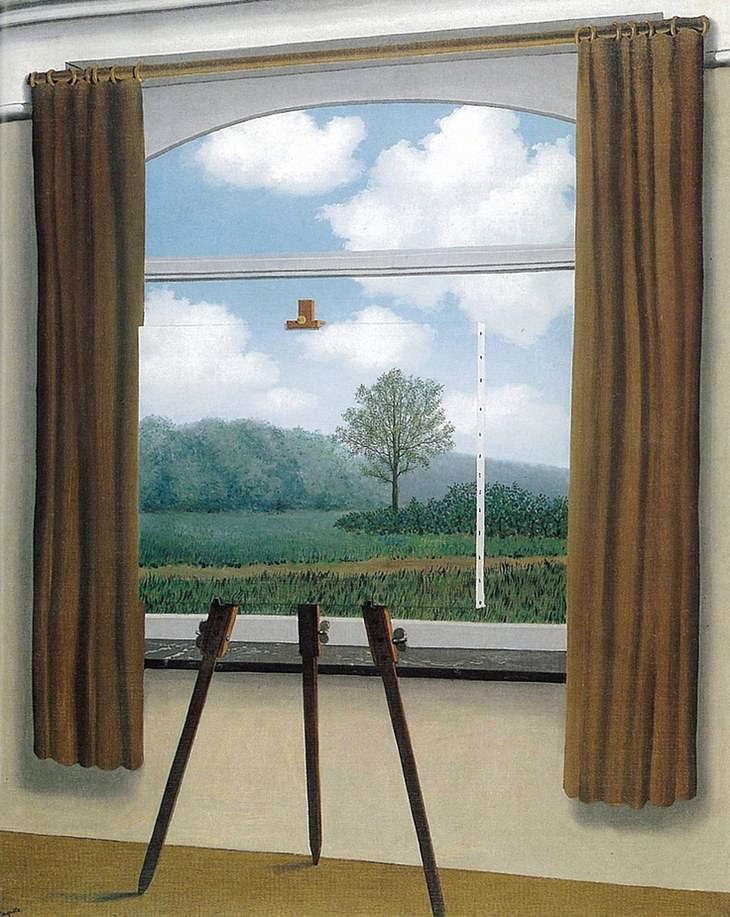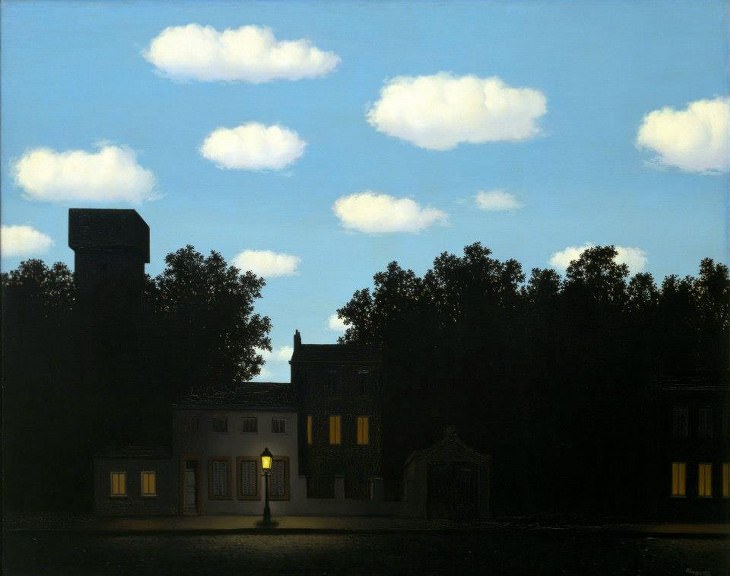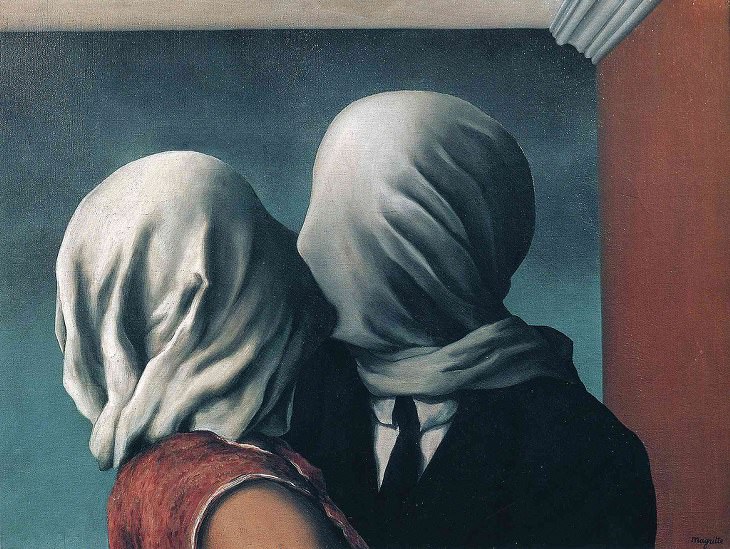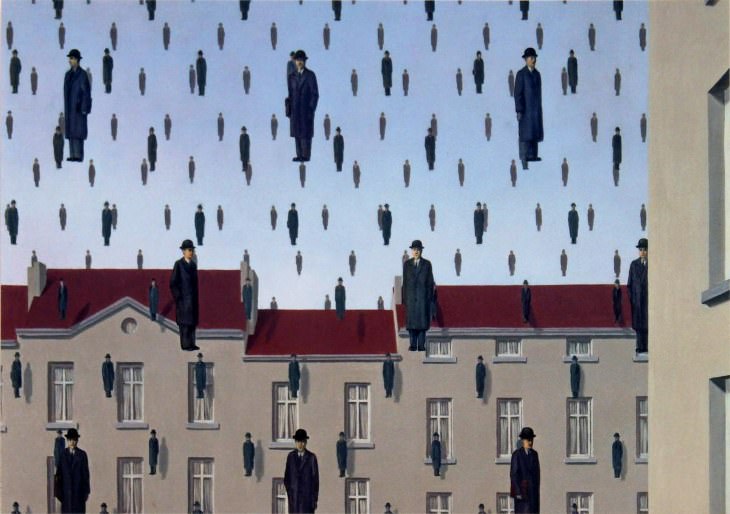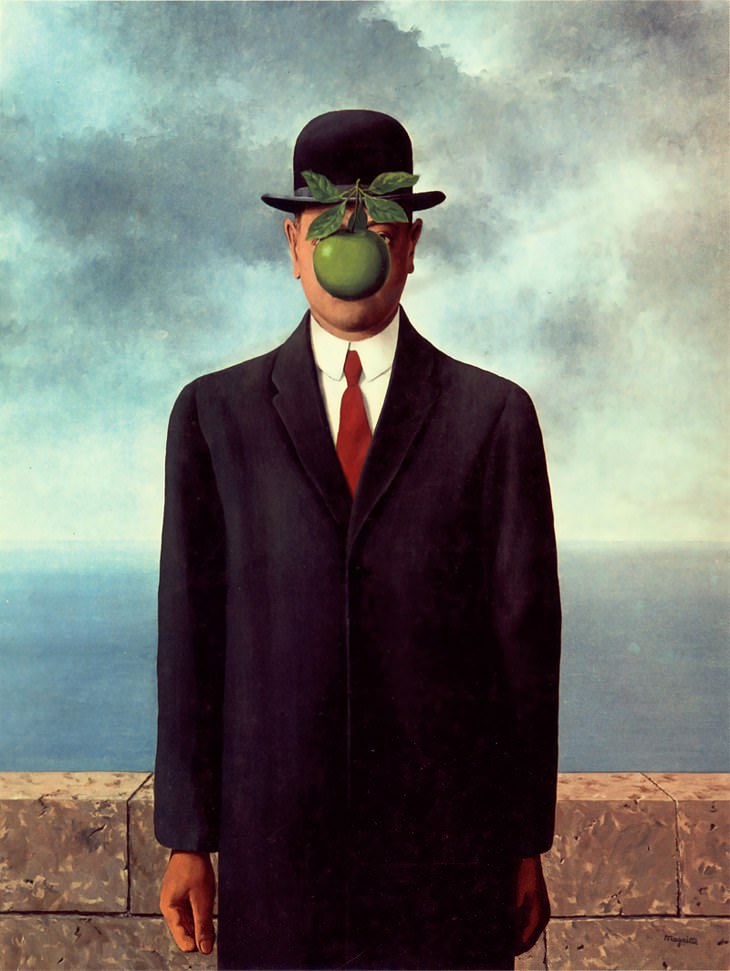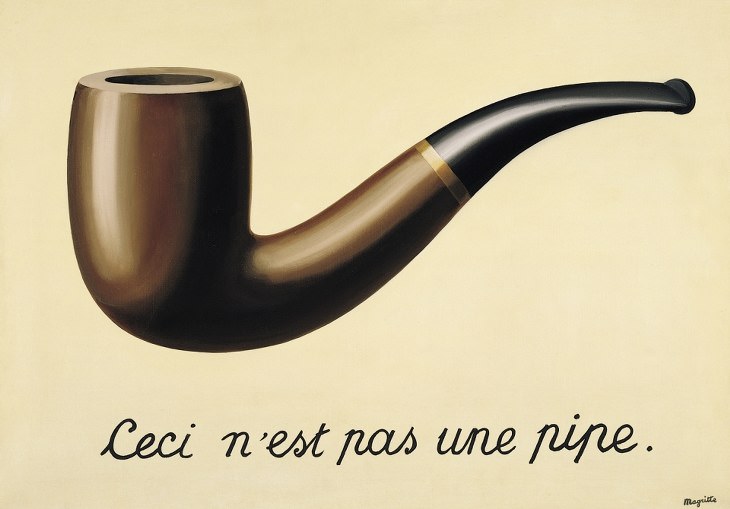1. The Lost Jockey, 1926 (Le Jockey Perdu)
Many of Magritte's earliest works were heavily influenced by abstract art movements, such as Cubism, Futurism, and Impressionism. However, in 1924 his art style started to transform into something completely different, and The Lost Jockey is considered to be his first surrealist work. Since he worked as a theater set designer in Brussels, many of his early works contain theatrical settings, as can be seen in the stage and curtains in The Lost Jockey.
2. The Portrait, 1935 (Le Portrait)
The Portrait is one of Magritte's paintings which best portrays his effective technique of unsettling the viewer by means of ordinary objects used in obscure contexts. In this case, the everyday table setting would be a perfect still-life painting if it weren't for the unblinking eye that stares at viewers from the center of a slice of ham.
3. The False Mirror, 1928 (Le Faux Miroir)
Here, we can see a huge lash-less eye that contains a bright cloud-filled blue sky, with an opaque black disc functioning as a pupil. The pupil is unnaturally placed in the center of the eye, making it seem as if the viewer is not only seeing but is being seen at the same time. A prominent American visual artist, called Man Ray, once described this painting as something that “sees as much as it itself is seen.”
4. Not to be Reproduced, 1937 (La Reproduction Interdite)
This painting was commissioned by a prominent British poet called Edward James, who was also a huge patron of surrealist art. Despite his face not actually appearing in the painting, it is generally considered to be James' portrait. While the subject's image in the mirror is displayed inversely, the book on the table (Poe's The Narrative of Arthur Gordon Pym of Nantucket) is not.
5. The Human Condition, 1933 (La Condition Humaine)
One of Magritte's most popular techniques was using objects in the foreground to hide things that lie behind them. In this case, we are presented with a landscape painting that seems to be entirely congruous with the real landscape that is found beyond the windowsill. The Human Condition is thus a painting within a painting.
6. The Empire of Light, 1953-1954 (L’Empire des Lumières)
The Empire of Light is a series of paintings that Magritte created over a period of two years, which exemplify simple paradoxes between darkness and light. In the painting above, one can observe a daytime sky with fluffy clouds in the top half, while in the bottom half, there is a dark street, lit by only a single lamp. Calm in singularity, the juxtaposition that the two halves create, make this both a thought-provoking and unnerving painting.
7. The Lovers, 1928 (Les Amants)
Here, one can observe a kiss shared between the veiled faces of a man and a woman. This is one of Magritte's most popular works, and it has been interpreted by art critics in many different ways. The most frequently accepted interpretation is that the painting shows how human beings are unable to ever fully reveal their true selves, even to their most intimate companions.
8. Golconda, 1953 (Golconde)
One of the most famous works to have ever emerged from the surrealist movement, Magritte's Golconda portrays a scene where many similarly-dressed men seem to be floating all across the sky. The most popular interpretation is that Magritte was trying to demonstrate just how obscure the line between group association and individuality really is.
9. The Son of Man, 1964 (Le Fils de l'Homme)
When creating his self-portrait, Magritte decided that it would be a good idea to obscure his own face by means of a levitating green apple. When questioned about it, Magritte once answered, “Everything we see hides another thing, we always want to see what is hidden by what we see. There is an interest in that which is hidden and which the visible does not show us. This interest can take the form of a quite intense feeling, a sort of conflict, one might say, between the visible that is hidden and the visible that is present.”
10. The Treachery of Images, 1928-1929 (La Trahison des Images)
Considered to be Magritte's greatest masterpiece, The Treachery of Images shows an image of a pipe with the words “Ceci n’est pas une pipe" written underneath, which is French for "This is not a pipe." While this might initially look like a contradiction, this statement is really implying that what you are looking at is merely a representation of a pipe and not an actual working pipe. In fact, Magritte himself said, "it's just a representation, is it not? So if I had written on my picture ‘This is a pipe’, I’d have been lying!”

